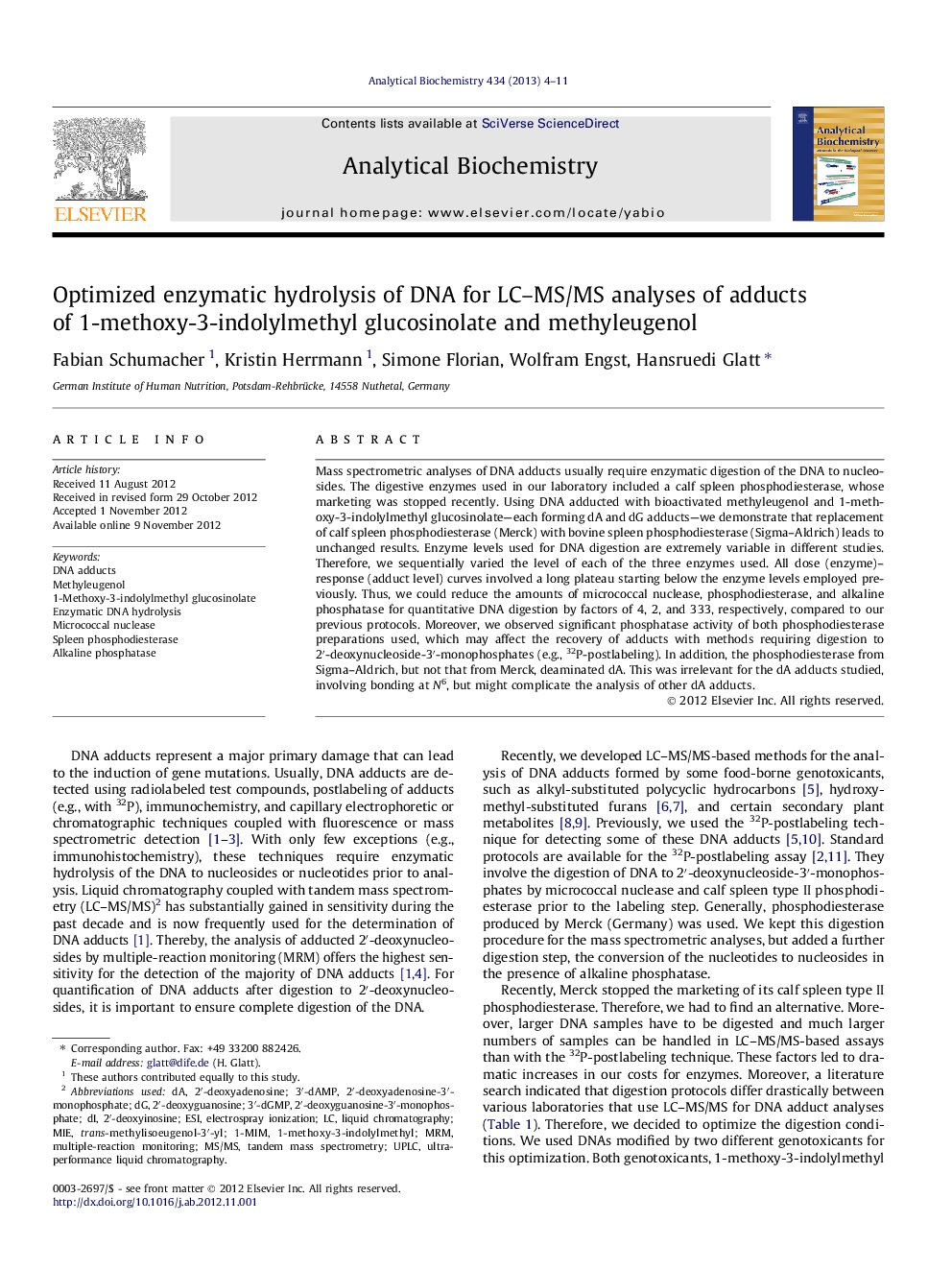| Article ID | Journal | Published Year | Pages | File Type |
|---|---|---|---|---|
| 10532574 | Analytical Biochemistry | 2013 | 8 Pages |
Abstract
Mass spectrometric analyses of DNA adducts usually require enzymatic digestion of the DNA to nucleosides. The digestive enzymes used in our laboratory included a calf spleen phosphodiesterase, whose marketing was stopped recently. Using DNA adducted with bioactivated methyleugenol and 1-methoxy-3-indolylmethyl glucosinolate-each forming dA and dG adducts-we demonstrate that replacement of calf spleen phosphodiesterase (Merck) with bovine spleen phosphodiesterase (Sigma-Aldrich) leads to unchanged results. Enzyme levels used for DNA digestion are extremely variable in different studies. Therefore, we sequentially varied the level of each of the three enzymes used. All dose (enzyme)-response (adduct level) curves involved a long plateau starting below the enzyme levels employed previously. Thus, we could reduce the amounts of micrococcal nuclease, phosphodiesterase, and alkaline phosphatase for quantitative DNA digestion by factors of 4, 2, and 333, respectively, compared to our previous protocols. Moreover, we observed significant phosphatase activity of both phosphodiesterase preparations used, which may affect the recovery of adducts with methods requiring digestion to 2â²-deoxynucleoside-3â²-monophosphates (e.g., 32P-postlabeling). In addition, the phosphodiesterase from Sigma-Aldrich, but not that from Merck, deaminated dA. This was irrelevant for the dA adducts studied, involving bonding at N6, but might complicate the analysis of other dA adducts.
Related Topics
Physical Sciences and Engineering
Chemistry
Analytical Chemistry
Authors
Fabian Schumacher, Kristin Herrmann, Simone Florian, Wolfram Engst, Hansruedi Glatt,
